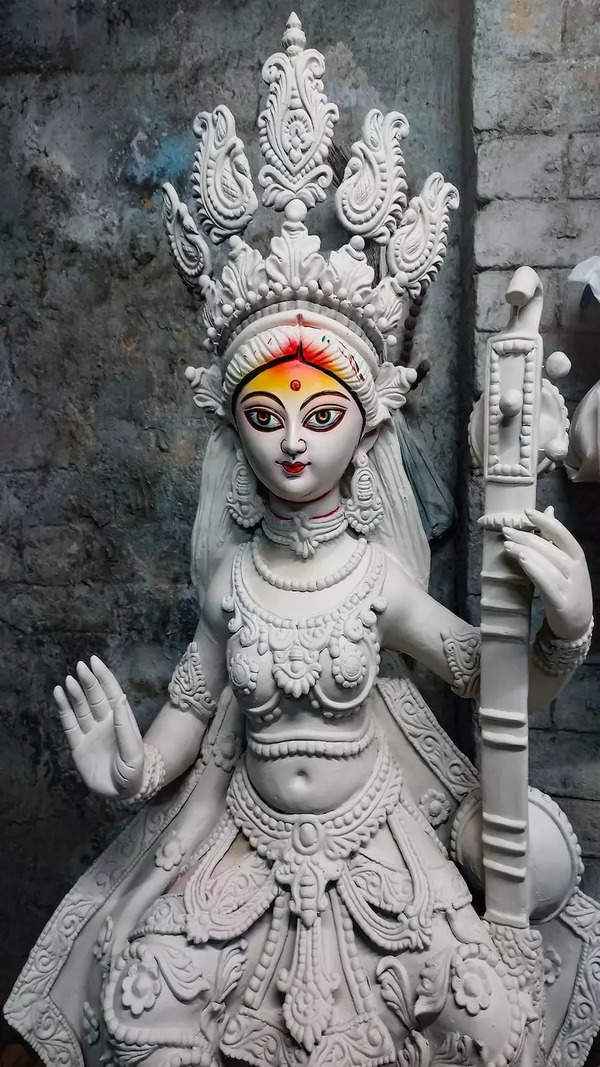(Bhadra Amavasya 2023, Bhadrapada Amavasya 2023, Bhadra Amavasya, Bhadrapada Amavasya, Amavasya 2023, Bhadra 2023, Bhadra, Bhadrapada, Amavasya)
Discover the date, time, rituals, and significance of Pithori Amavasya in 2023. Explore the customs and beliefs associated with this auspicious day for honoring ancestors and seeking spiritual growth. Join in the celebrations and embark on a new phase of personal and spiritual growth.
Amavasya, also known as the New Moon day, holds great significance in various cultures and religions. Derived from the Sanskrit words “ama” (meaning “together” or “incomplete”) and “vasya” (meaning “to dwell” or “to stay”), Amavasya refers to the absence or disappearance of the Moon from the night sky. This auspicious day is observed by performing rituals, seeking spiritual purification, honoring ancestors, and connecting with deities. It offers individuals an opportunity for self-reflection, setting intentions, and embarking on a new phase of personal and spiritual growth. Join in the celebrations and discover the profound meaning behind Amavasya.
Bhadrapada Amavasya 2023 and Its Significance
Amavasya, also known as the New Moon day, holds great significance in various cultures and religions. Derived from the Sanskrit words “ama” (meaning “together” or “incomplete”) and “vasya” (meaning “to dwell” or “to stay”), Amavasya refers to the absence or disappearance of the Moon from the night sky.
Meaning of Amavasya in various cultures and religions
Amavasya is considered an auspicious day for performing rituals and observances in many traditions. It is believed that during this time, the negative energies and impurities are at their peak, and by engaging in specific rituals, individuals can cleanse themselves spiritually and seek divine blessings. The significance and customs associated with Amavasya vary across different cultures and religions.
In Hinduism, Amavasya is regarded as a propitious occasion for offering prayers to one’s ancestors. It is believed that on this day, the spirits of departed ancestors visit their descendants, and by honoring them, individuals can receive their blessings and seek their guidance. Rituals such as Tarpana (offering of water to ancestors), Pinda Daan (ritual offering of food to departed souls), and performing Shradh (rituals for the peace of ancestors) are commonly observed during Amavasya.
Importance of performing rituals and observances during Amavasya
Amavasya is a sacred time to connect with the divine and seek spiritual growth. By performing rituals and observances during Amavasya, individuals can purify their energy, seek divine blessings, and enhance their spiritual well-being. The observance of Amavasya rituals is believed to bring peace, prosperity, and harmony to one’s life.
Beliefs and customs associated with Amavasya
Amavasya is associated with various beliefs and customs in different cultures and religions. In addition to ancestor worship, Amavasya is also considered a suitable time for the worship of deities. Many devotees observe fasts and offer prayers to Lord Shiva, Goddess Kali, or other deities, seeking their divine grace and blessings. Temples and sacred places witness an increased influx of devotees on this day, as they engage in religious activities and seek spiritual upliftment.
Do you know Kushi Amavasya ?
Hindu Tradition of Ancestor Worship
Significance of offering prayers to ancestors on Amavasya
In Hindu culture, ancestors hold a special place of reverence and respect. It is believed that by offering prayers to ancestors on Amavasya, individuals can receive their blessings and seek their guidance. Ancestor worship is an ancient tradition that aims to honor and remember those who have passed away, and to maintain a connection with them in the afterlife.
Rituals such as Tarpana and Pinda Daan
Tarpana and Pinda Daan are two common rituals performed during Amavasya to honor ancestors. Tarpana involves offering water and prayers to ancestors, while Pinda Daan involves the ritual offering of food to departed souls. These rituals are believed to bring peace and fulfillment to both the living and the departed, ensuring the well-being and spiritual progress of the entire family lineage.
Observance of Shradh for the peace of ancestors
Shradh is a period of rituals and observances that spans over 15 days, with Amavasya being an important day within this period. It is believed that during Shradh, the ancestors visit their descendants, and by performing rituals and offering prayers, individuals can ensure the peace and well-being of their ancestors in the afterlife. Shradh is a time of remembrance, gratitude, and offering of food, clothes, and other essentials to the departed souls.

This image is property of static.toiimg.com.
Amavasya Date and Time in September 2023
Date of Amavasya in September 2023
In September 2023, Amavasya is going to be observed on September 14th, which falls on a Thursday.
Duration of Amavasya Tithi
The Amavasya Tithi, or the lunar day of Amavasya, begins on September 14th, 2023, at 04:49 AM, and ends on September 15th, 2023, at 07:09 AM.
| Amavasya Tithi Begins | September 14, 2023 – 04:48 AM |
| Amavasya Tithi Ends | September 15, 2023 – 07:09 AM |
Worship of Deities on Amavasya
Devotees observing fasts and offering prayers to deities
Along with ancestor worship, Amavasya is also a time for devotees to observe fasts and offer prayers to deities. Many individuals choose to worship Lord Shiva, Goddess Kali, or other deities associated with Amavasya, seeking their divine grace, protection, and blessings. Devotees believe that by engaging in these practices, they can enhance their spiritual well-being and connect with the divine energy.
Increased influx of devotees to temples and sacred places on Amavasya
Due to the religious significance of Amavasya, temples and sacred places witness an increased influx of devotees on this day. People visit these places to seek blessings, participate in religious ceremonies, and offer prayers and offerings to the deities. The atmosphere is filled with devotion, and it becomes an opportune time for devotees to deepen their spiritual connection.

This image is property of static.toiimg.com.
Traditional Practices and Customs
Lighting lamps or candles as a symbol of dispelling darkness
One of the traditional practices associated with Amavasya is the lighting of lamps or candles. This practice symbolizes the dispelling of darkness and the arrival of light and positivity. By lighting lamps, individuals seek to bring positivity and divine energy into their lives and homes, as well as to dispel negative energies and obstacles.
Observing silence or meditation for inner tranquility
Amavasya is considered a suitable time for observing silence or engaging in meditation practices. The calm and peaceful environment created during this time allows individuals to introspect, contemplate, and cultivate inner tranquility. By observing silence or practicing meditation, individuals can enhance their self-awareness, gain clarity, and connect with their inner self.
Using Amavasya as a time for self-reflection and setting intentions
Amavasya also provides an opportunity for self-reflection and setting intentions for personal growth and improvement. Many individuals use this day to engage in personal rituals such as meditation, journaling, or practicing gratitude. They reflect on their past actions, assess their current circumstances, and set intentions for the future. It is a time to align one’s energy and focus on positive changes in various aspects of life.
Regional and Community Variations
Different customs and practices during Amavasya
Amavasya customs and practices vary across different regions and communities. While the core idea of honoring ancestors and seeking spiritual growth remains the same, the specific rituals, prayers, and observances may differ. Each region and community may have their unique ways of celebrating and observing Amavasya, depending on their cultural traditions and beliefs. These regional and community variations contribute to the diversity and richness of Amavasya celebrations.
Diverse beliefs and rituals across regions and communities
From the Avani Amavasya in Tamil Nadu to the Bhado Amavasya or Bhadi Amavasya in the Marwari community, Amavasya is celebrated with diverse beliefs and rituals. The worship of deities, offerings to ancestors, and practices of self-reflection may have unique regional variations. These diverse beliefs and rituals emphasize the cultural and spiritual significance of Amavasya in different parts of the world.

This image is property of static.toiimg.com.
Conclusion
Amavasya, the New Moon day, holds great spiritual significance across cultures and religions. It is a time for performing rituals, seeking spiritual purification, honoring ancestors, and connecting with deities. Amavasya provides individuals with an opportunity for self-reflection, setting intentions, and embarking on a new phase of personal and spiritual growth. The observance and customs associated with Amavasya may vary, but the underlying theme of seeking spiritual upliftment and divine blessings remains constant. By engaging in Amavasya rituals and observances, individuals can deepen their spiritual connection and cultivate a sense of inner peace, harmony, and well-being.
Read More :-
Vasudhaiva Kutumbakam Meaning : Embracing the Universal Brotherhood G20
Vasudhaiva Kutumbakam G20 : Global Unity in Economic Cooperation



